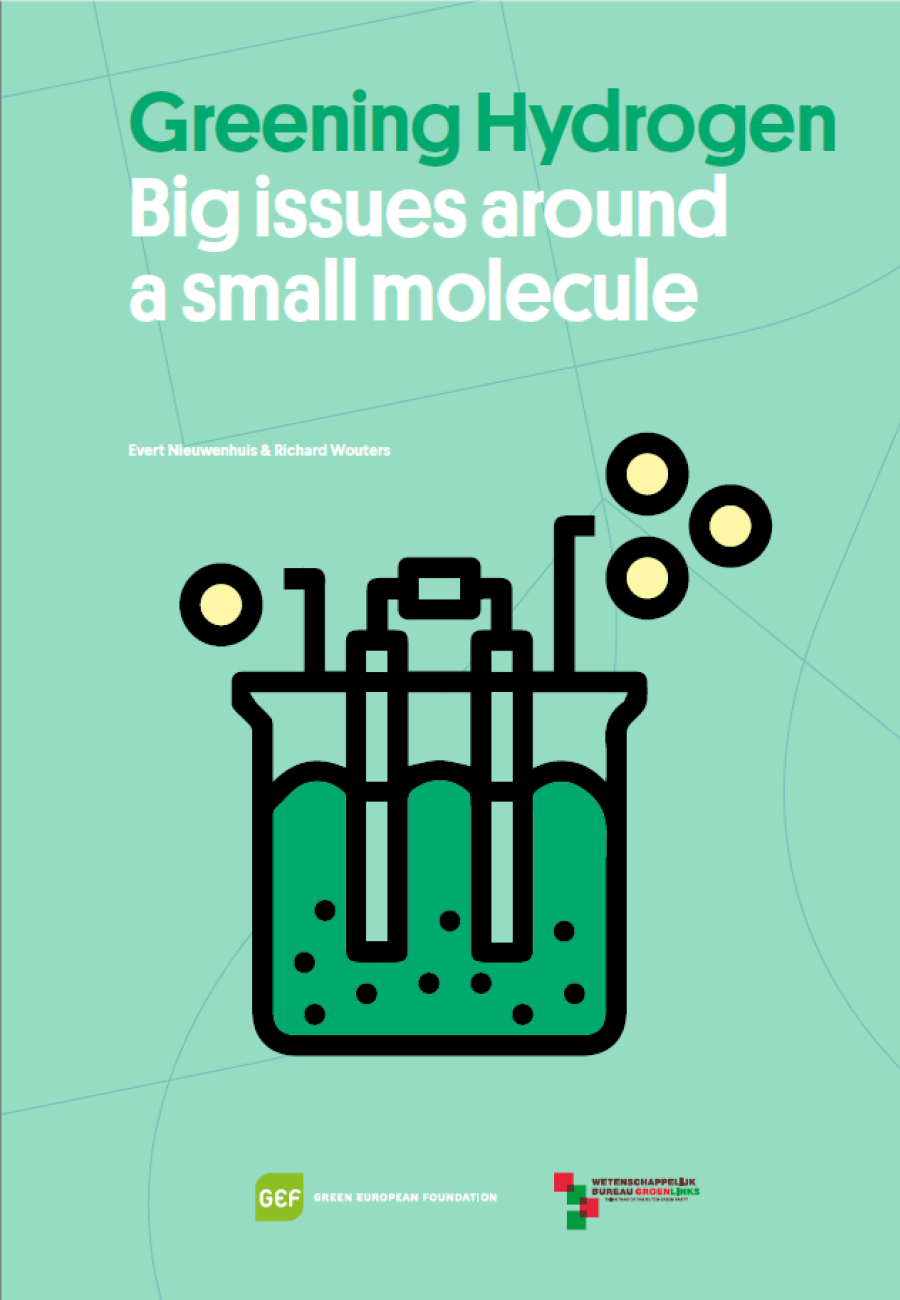Year: 2021
Number of pages: 32
Price: free

Green hydrogen is a key element of the transition to a fossil-free, climate-neutral, and circular economy. It is produced from water and renewable electricity. It can be used as both an energy carrier and a feedstock, replacing fossil inputs. When used for energy, in a fuel cell or a burner, it releases no CO2.
However, green hydrogen is extremely energy-intensive. It will be in short supply well into the next decade. That raises a number of pressing questions for green industrial policies. This report for the Green European Foundation gives an overview of the most controversial issues surrounding hydrogen. It focuses on three responses to the shortage of green hydrogen and examines their advantages and disadvantages.
The first is blue hydrogen. It is produced from natural gas, with most of the CO2 captured and stored underground. Blue hydrogen could play a useful role within a transition phase, but how do we avoid a lock-in that slows down the emergence of green hydrogen?
The second response, the hydrogen ladder, allows us to determine which green hydrogen applications should have priority under a shortage scenario.
The third response is to import hydrogen from solar- or wind-rich countries outside the EU. This offers both opportunities and threats. How do we ensure that the people in these countries actually benefit from the hydrogen trade? And how do we mitigate the geopolitical risks of reliance on hydrogen imports?
The report concludes with 20 political recommendations.
